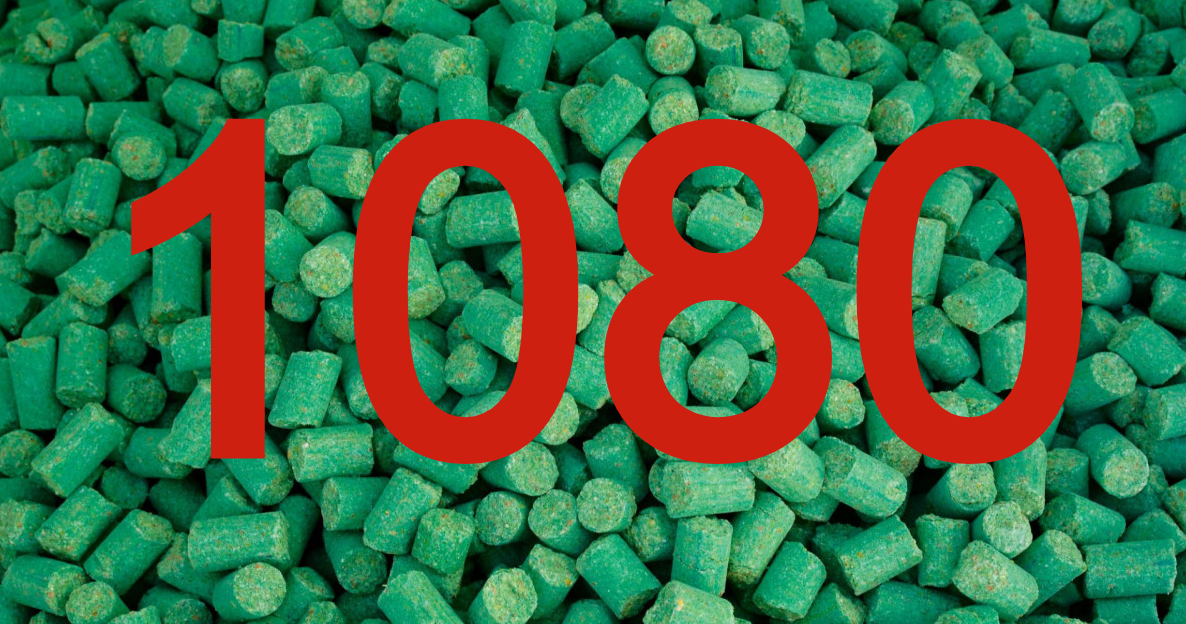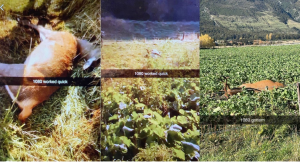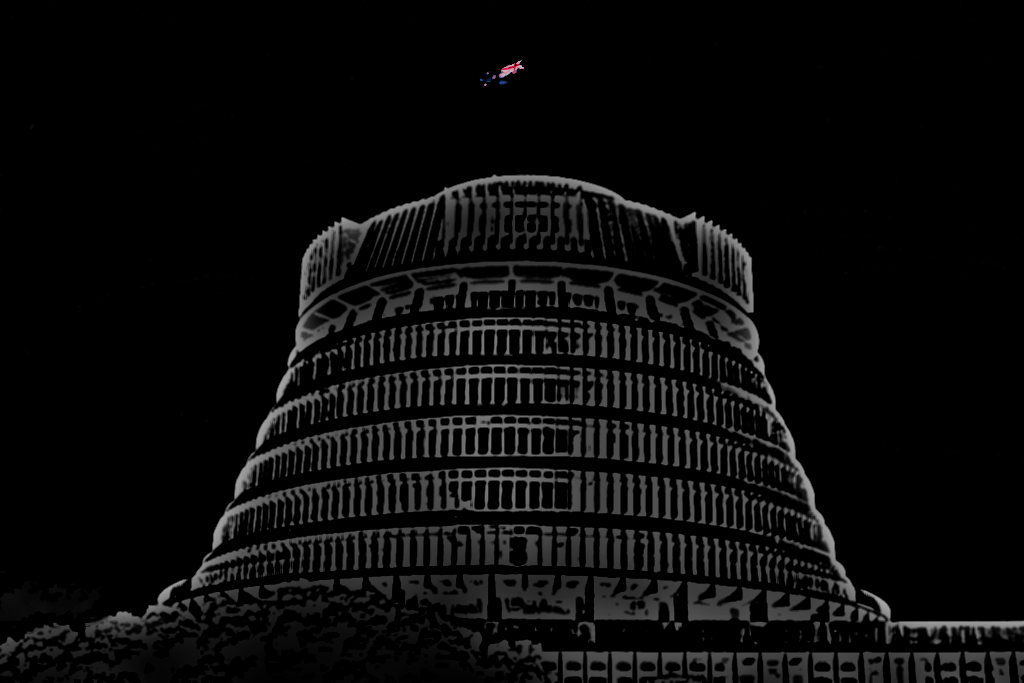
1080 POISON PELLETS ON WALKING TRACKS, DEER CARCASSES ON FARMLAND IN MAKARORA VALLEY
by Thomas S.
On Saturday 27th April 2024, the Department of Conservation conducted a pest-control operation across some 46,000 hectares in the sub-alpine bush of the Makarora Valley in Mount Aspiring National Park, near the border of the Otago and West Coast regions.
The operation involved the aerial application of sodium fluoroacetate, more commonly known as 1080, which has been used by New Zealand for the eradication of introduced pests such as possums and rats, ever since the 1950’s.
During these operations, a pre-feed of neutral pellets is dumped by helicopters over the targeted area several weeks before the hot dose, in order to acclimatise pests to the pellets. This is then followed by a load of bright, green coloured poisoned pellets several weeks later.
Despite the longevity of its use in New Zealand however, 1080 remains a controversial issue, with many considering the levels of collateral deaths among native bird populations to be unacceptable.
The widespread, aerial application of the pesticide also poses risks to livestock, wild game and domesticated animals, as well as people who live nearby and who interact with the outdoors.
Indeed, to say that 1080 is unpopular, would be an understatement and one need only spend a few days in a provincial New Zealand town in any part of the country, before noticing bumper stickers on utes and work wagons with ‘Ban 1080’ slogans.
Unsurprisingly, the Department of Conservation are frequently just as unpopular in small-town New Zealand, with farmers, hunters, greenies and outdoor enthusiasts all equally criticising the government department which is tasked with environmental protection, over this issue.
INDISCRIMINATE CULLING OF WILDLIFE:
A recent example of such public criticism was leveled against the department in 2020, after six kea which have protected status in New Zealand and which were being monitored by the Kea Conservation Trust, were killed after consuming 1080 pellets in the nearby Matukituki Valley.
When factoring in the unmonitored kea population as well, the rate of collateral may be potentially much more than this.
With less than seven thousand of these native birds left in the wild, sodium fluoroacetate’s indiscriminate culling of wildlife, all in the name of saving that very same wildlife, does not garner much in terms of support from the public. And it’s not just native fauna that are at risk from this ongoing ‘conservation effort’ either.
On Sunday 28th April, the day after the aerial application in the Makarora Valley, a local farmer had to call the Department of Conservation after discovering three dead deer in a paddock – a hind, a yearling and a stag.
THREE DEER CARCASSES FOUND ON FARMLAND – THE ANIMALS MOST LIKELY WANDERED OUT OF THE BUSH AFTER BEING POISONED, SPREADING THE DISTANCE OF THE 1080 BEYOND THE TARGETED AREA

The paddock was located on the bush edge, near the braided Makarora River, with one of the carcasses reportedly found just 30 metres away from the water. This water flows into Lake Wanaka, which is used frequently for recreation and which also services the municipal water supply for the local township.
The Department of Conservation responded to the farmer by sending two staff, along with a helicopter which hauled the carcasses off to be dumped in the bush up a nearby side valley.
PELLETS FOUND ON PUBLIC WALKING TRACKS:
Another local Makarora farmer by the name of Christine, who is also a trapper as well as an animal welfare and environmental advocate, discovered and photographed 1080 pellets found on a nearby popular walking track on Monday 29th April, two days after the aerial application took place.
Not only this, but the walking track was in use at the time and visitors to the track were stunned when told what the pellets were. The track, which leads to the famous Blue Pools, is extremely popular with tourists, many of whom would be unaware of the deadly nature of this poison.
Although the two bridges at the end of this route are currently closed, the track up to the first bridge is a fifteen minute walk, with full access to the public. Photographs taken at the time also show members of the public in the vicinity of the 1080 pellets.
According to Christine, there were at least fifty pellets seen on or beside the track, which were still visible two days after the drop. In previous years, she has encountered and struck up conversations with Department of Conservation staff who have been walking these local tracks immediately after an aerial application and whose task it has been to clear 1080 pellets from these walkways.
“Often times, these pellets are just biffed into the bush. One of the DOC guys that I spoke to a few years ago said he was just doing what he was told.” Christine says.
BRIGHT GREEN 1080 POISON PELLETS WERE FOUND TWO DAYS AFTER THE DROP ON A PUBLIC WALKING TRACK, WHICH WAS OPEN TO THE PUBLIC AND BEING USED AT THE TIME OF THE PHOTOGRAPHS

With the capacity to take down a full-grown stag, one can only shudder at what might happen to a curious child who might come into contact with the brightly-coloured bait on a public walking track. Dogs too, are at extreme risk of death due to secondary poisoning from carcasses.
According to Ospri, a not-for-profit pest-management organisation:
“On the rare occasions when dogs come into contact with 1080, the outcome is often fatal. Dogs tend to roam, so they’re at greater risk of 1080 poisoning than other domestic animals.”
Poisoned carcasses retain 1080 residue for eight to nine months during the decaying process and
pose a risk to dogs that may scavenge on them during that time. Carcasses that wash into streams, rivers and lakes may also contaminate fish, which may be passed on for human consumption.
SEEKING AN ALTERNATIVE:
The shifting of responsibility is all too common among those who are confronted by the public in the course of these pest eradication operations. During the 1080 operation which took place on Saturday 27th April for instance, Christine approached a security guard who was guarding the helicopter loading site for a conversation.
When asked, “Don’t you feel bad doing this?” the security guard responded that it was “a bit of a shame, but what’s the alternative?” The security guard was also under the impression that the operation was “targeted” – which it most certainly was not.
Indeed, many have been led to believe that 1080 is both targeted and that it is the only viable solution to solving the issue of introduced species of predator, which native species are ill-equipped to defend themselves against.
And despite a growing number of New Zealanders who acknowledge that sodium fluoroacetate causes environmental harm, which greatly outweighs any benefits, the government continues to push the product as the only viable option.
After all, the Department of Conservation’s continued use of the poison is big business and money has a way of prioritising the needs of those who wield it.
According to Dr. Alexis Mari Pietak, a biomedical research scientist who has studied the issue in depth and presented a paper titled: ‘A Critical Look at Aerial-Dropped, Poison-Laced Food in New Zealand’s Forest Ecosystems’:
“Due to the hazards posed by 1080, it has been banned as a predator control agent in the United States since 1972, and as a rodenticide since 1990, except for its use in livestock protection collars. Compound 1080 is used in only very limited quantities and in controlled ways (baited traps) in countries outside of New Zealand (Australia, Canada, Mexico, Israel), making New Zealand the only country to practice aerial distribution of 1080-laced food into its forest ecosystems. New Zealand purportedly uses 80-90% of all 1080 manufactured globally.”
Alternatives to this method of pest eradication, including those which are ‘target-specific’ do exist however. And furthermore, these methods are already being implemented at present, albeit on a smaller scale.
For instance, there is a large scale trapping operation which has been operating in the Makarora Valley for the past two years and live-capture traps have been operating there for three years.
Triggered live-capture traps are notified via satellite node. Pests such as wild cats, hedgehogs and possums, which pose a threat to native fauna, are despatched humanely with a .22 and non-targeted species are released unharmed, unlike the indiscriminate aerial application of 1080 poison.
“The whole point is to protect those birds out in the river flats and in the bush.” Christine says.
She also comments that much of the terrain in the region which is being subjected to aerial applications of 1080, is also accessible by foot and that other means such as trapping and bait stations could be deployed in these areas.
If redirected, the costs currently being spent on 1080 operations by the Department of Conservation could potentially pay for this more environmentally friendly option many times over, in addition to generating employment opportunities for locals living in rural areas.
“They say they have to use 1080 due to inaccessibility, but that is not true.” Christine says, “Sure, there are some areas higher up that are hard to access, but much of the lower area is totally accessible.”
Among the native fauna which are benefiting from the trapping in the region is the Mohua, or Yellowhead, which has become rare despite having been seen regularly throughout New Zealand forests in the 1800’s. And as Christine points out, today these birds are rarely seen so close to a road.
According to Craig, a local hunter who went out to observe and film the recent 1080 drop in Makarora Valley after being alerted to it by a friend:
“I felt the need to go and be present. It spiritually affected me watching the helicopters flying out after being loaded up and then coming back to reload. It affected me in such a way as I felt the pain and utter despair of all the animals, birds and insects being poisoned.”
Craig, who hunts in the region and tries to rely on game to fill the freezer wherever possible, also points out the hypocrisy of 1080 being used while the government continues to preach about sustainability.
“It’s a huge waste of a food resource – our venison.” he says.
Indeed, anyone who has spent time in Mount Aspiring National Park, or anywhere else in the great outdoors, can sympathise with the bond that provincial New Zealanders have with the land. These aerial 1080 operations are occuring nationwide however, with little resistance from the public, despite widespread discontent about the issue.
And while the government makes a show of caring for the environment while greenwashing their attempts to strip more rights from the people, the case in point demonstrates that they actually have very little regard, nor any genuine love for nature.
Look for more articles on counterspinmedia.com/blog
and at counterspinmedia.substack.com
Please pass all Counterspin articles on to those you think would appreciate them but will not come to them without your assistance. We are creating the new world, and it begins with honest human interaction and the sharing of ideas.
-
-
Thursday - May 2, 2024 - Conservation
(6) - Investigation
(40) - NZ Investigation
(28) - Spiritual Warfare
(46) - Tyranny
(36) - Uncategorized
(38)




Leave a Comment